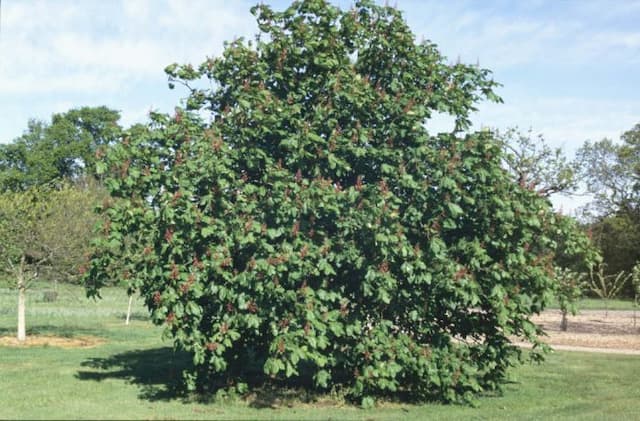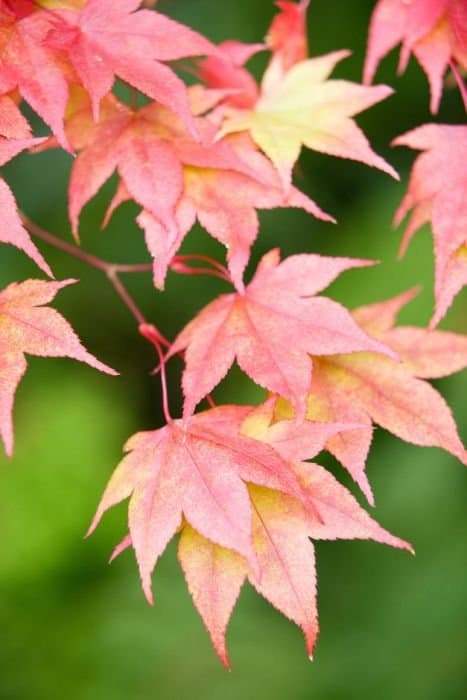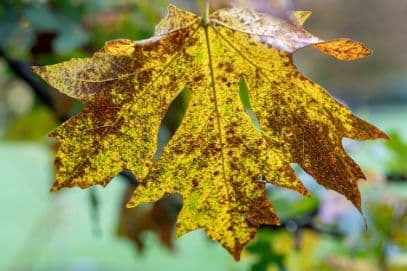Dodonaea viscosa

ABOUT
The plant commonly known as hopbush is recognized by its shiny, lance-shaped leaves that cluster along its branches, often taking on a leathery texture. The foliage can display a range of hues, from bright green to a purple or reddish tint, changing with the seasons or varying environmental conditions. This hardy shrub is adorned with small, inconspicuous flowers that may be green or yellow, sometimes with a purplish cast. These flowers give way to distinctive winged fruits, or samaras, which resemble the hops used in brewing beer, hence the common name 'hopbush'. The fruit typically starts out green and ripens to a papery texture, often turning reddish-brown or purplish, adding to the ornamental value of the plant. The overall form of the hopbush is dense and bushy, with a graceful, somewhat spreading habit that can create a lush appearance in the landscape. Its adaptability to various conditions and the attractive, persistent fruits make it a popular choice for gardeners looking for a resilient and decorative addition to their plantings.
About this plant
 Names
NamesFamily
Sapindaceae.
Synonyms
Hop Bush, Hopseed Bush, Varnish Leaf, Florida Hopbush, Sticky Hopbush, Sand Olive, Wedge-leaved Hop Bush, Akeake.
Common names
Dodonaea angustifolia, Dodonaea thunbergiana, Ptelea viscosa
 Toxicity
ToxicityTo humans
Dodonaea viscosa, commonly known as hopbush, is not typically considered toxic to humans. There is limited information regarding its toxicity, and it does not appear on most lists of poisonous plants. Consequently, there is a lack of detailed symptoms associated with poisoning from this plant. However, as with any plant, some individuals may have sensitivities or allergic reactions to it. If ingested in large quantities, there may be a risk of gastrointestinal discomfort or other adverse effects. It is always advisable to exercise caution and avoid eating parts of plants that are not known to be edible.
To pets
Hopbush is not widely recognized as a toxic plant to pets either. It does not commonly appear on lists of plants that are poisonous to dogs, cats, or other domestic animals. Therefore, there is a lack of specific symptoms associated with hopbush poisoning in pets. Nonetheless, it's generally recommended to prevent pets from ingesting plants that are not intended for consumption, as they could potentially cause gastrointestinal upset or other unintended effects. If you suspect your pet has eaten a significant amount of hopbush or is showing signs of illness, it is best to consult with a veterinarian.
 Characteristics
CharacteristicsLife cycle
Perennials
Foliage type
Evergreen
Color of leaves
Green
Height
10-15 feet (3-4.5 meters)
Spread
10-15 feet (3-4.5 meters)
Plant type
Shrub
Hardiness zones
9-11
Native area
Australia
Benefits
 General Benefits
General Benefits- Erosion Control: Dodonaea viscosa, commonly known as hopbush, has extensive root systems that help stabilize soil and prevent erosion.
- Windbreak: Its dense foliage and sturdy branches make it an excellent choice for creating windbreaks, reducing wind speed and protecting other plants.
- Privacy Screening: Hopbush can grow into thick hedges, offering privacy and acting as a noise barrier.
- Drought Tolerance: This plant is highly adapted to arid environments, making it suitable for water-wise gardens and xeriscaping.
- Wildlife Habitat: It provides shelter and food for birds, insects, and other wildlife, contributing to biodiversity.
- Ornamental Use: With its attractive green leaves and colorful seed pods, hopbush is often used in ornamental gardening and landscaping projects.
- Low Maintenance: Hopbush requires minimal care once established, making it an ideal plant for low-maintenance gardens.
- Soil Improvement: The plant can be used in revegetation projects, helping improve soil conditions and promote the establishment of other species.
- Coastal Resilience: Being salt-tolerant, hopbush is suitable for coastal areas, where it can thrive despite harsh conditions.
 Medical Properties
Medical Properties- Anti-inflammatory: Dodonaea viscosa has been used to reduce inflammation in various conditions.
- Analgelsic: The plant contains compounds that are believed to relieve pain.
- Antibacterial: Extracts from the plant have shown antibacterial properties, potentially inhibiting the growth of certain bacteria.
- Antifungal: Similar to its antibacterial uses, the plant may help to inhibit the growth of certain fungi.
- Antipyretic: Traditionally used to reduce fever.
- Antioxidant: Contains compounds that are capable of neutralizing free radicals.
- Expectorant: Used to treat coughs and aid in the expulsion of mucus.
- Wound Healing: Applied topically to promote the healing of cuts and wounds.
- Hepatoprotective: There is evidence to suggest that it may have a protective effect on the liver.
 Air-purifying Qualities
Air-purifying QualitiesThis plant is not specifically known for air purifying qualities.
 Other Uses
Other Uses- Dodonaea viscosa, commonly known as hopbush, is used in the treatment of leather. Its tannins help in curing leather, making it more durable.
- The wood of hopbush is utilized for crafting tool handles due to its strength and resilience.
- In some cultures, branches and leaves of hopbush are used as a natural insect repellent when burned.
- The trees are often employed as windbreaks in agricultural fields, reducing soil erosion and protecting crops.
- Hopbush's dense and bushy habit makes it a popular choice for privacy hedges in landscaping.
- The seeds of the plant are sometimes used as a substitute for hops in the brewing of beer, contributing a bitter flavor.
- Due to its fast-growing nature, hopbush is used in reforestation projects and to rehabilitate degraded lands.
- The plant's colorful foliage, especially in varieties with reddish leaves, is used for ornamental purposes in gardens and parks.
- Hopbush can also be utilized in creating natural dyes for coloring fabrics and materials using various parts of the plant.
- The flexible branches are traditionally woven into baskets and mats by indigenous communities.
Interesting Facts
 Feng Shui
Feng ShuiThe Hop Bush is not used in Feng Shui practice.
 Zodiac Sign Compitability
Zodiac Sign CompitabilityThe Hop Bush is not used in astrology practice.
 Plant Symbolism
Plant Symbolism- Resilience: Dodonaea viscosa, commonly known as the hopbush, is known for its ability to withstand tough environmental conditions, making it a symbol of resilience and perseverance.
- Protection: With its evergreen nature and sturdy form, the hopbush has been used in traditional practices to offer protection against wind and soil erosion, symbolizing shelter and safety.
- Healing: As hopbush has been used in various traditional medicines to treat ailments, it symbolizes healing and the restoration of health.
- Adaptability: Hopbush's capacity to adapt to various soil types and climates represents adaptability and the ability to thrive in diverse conditions.
 Water
WaterThe Hop Bush, or Dodonaea viscosa, prefers dry conditions and should only be watered moderately. In general, water the Hop Bush once every 7 to 14 days, providing 1 to 2 gallons per watering depending on the size of the plant and the local climate. Less water is needed during the winter or when rain is frequent. Always allow the top few inches of soil to dry out before watering again to avoid overwatering and potential root rot. It is crucial to avoid stagnant water around the roots, so ensure the plant has good drainage.
 Light
LightHop Bush thrives best in full sun to partial shade conditions. For optimal growth, place the plant in a location where it will receive at least 6 hours of direct sunlight daily. The Hop Bush is adaptable and can tolerate some shade, but its foliage and flowering may be less vigorous in lower light situations.
 Temperature
TemperatureHop Bush can tolerate a wide range of temperatures, generally surviving between 20°F to 100°F. However, the ideal temperature range for this plant is between 60°F and 85°F. While the Hop Bush is quite resilient and can withstand occasional temperature extremes, it's best to avoid sustained exposure to conditions below freezing to prevent damage.
 Pruning
PruningThe Hop Bush should be pruned to maintain shape, remove dead or damaged branches, and encourage denser foliage. Pruning is best done in late winter or early spring before new growth begins. Light pruning can be performed yearly, while more substantial cuts should be done as needed, typically every 2 to 3 years. Always use sharp, sterile pruning tools to make clean cuts.
 Cleaning
CleaningAs needed
 Soil
SoilHop Bush thrives in well-draining soil with a pH range of 6.5 to 7.5. A mix of loam, sand, and some organic matter will create an ideal growing medium for the plant. Keeping the soil aerated and ensuring good drainage is pivotal for the health of the plant's root system.
 Repotting
RepottingHop Bush does not require frequent repotting and can be done every 2-3 years, or when the plant has outgrown its current pot. Repotting is best done during the spring or early summer when the plant is actively growing.
 Humidity & Misting
Humidity & MistingHop Bush is adaptable to various humidity levels but prefers a moderate range. It doesn't require high humidity and can do well in the average atmospheric moisture levels found in most homes and outdoor environments.
 Suitable locations
Suitable locationsIndoor
Provide bright light; ensure pot has drainage holes for Hop Bush.
Outdoor
Plant in sunny spot; well-drained soil; water sparingly for Hop Bush.
Hardiness zone
9-11 USDA
 Life cycle
Life cycleHopbush (Dodonaea viscosa) begins its life cycle with seed germination, typically after the seeds have undergone a period of dormancy and are exposed to favorable conditions such as moisture and warmth. Seedlings emerge and establish a root system, while shoots develop into young plants. As hopbush matures, it develops woody stems and a robust foliage characterized by lance-shaped leaves with a leathery texture. The plant flowers, usually in clusters, producing small, inconspicuous flowers that may be either male, female, or hermaphroditic, depending on the plant variety. After pollination, hopbush produces papery, winged seed capsules that dry and split open to release seeds. This hardy shrub can also spread vegetatively through root suckers, allowing it to form dense stands or thickets.
 Propogation
PropogationPropogation time
Spring to Summer
Propogation: The most popular method of propagation for Hopbush (Dodonaea viscosa) is by seed. This plant tends to produce seeds towards the end of summer or the beginning of fall, which is the ideal time for seed collection and sowing. Once collected, the seeds require pretreatment to break dormancy. This is typically done by soaking them in hot water at approximately 194 degrees Fahrenheit (90 degrees Celsius) and then letting them cool for 24 hours. After the seeds have swollen, which usually indicates successful breaking of dormancy, they can be sown in a well-draining soil mix. Germination occurs best at temperatures around 68 to 86 degrees Fahrenheit (20 to 30 degrees Celsius). Seedlings can be expected to emerge in a couple of weeks and should be grown on in individual pots before being planted out into their final position once they've established a strong root system.








